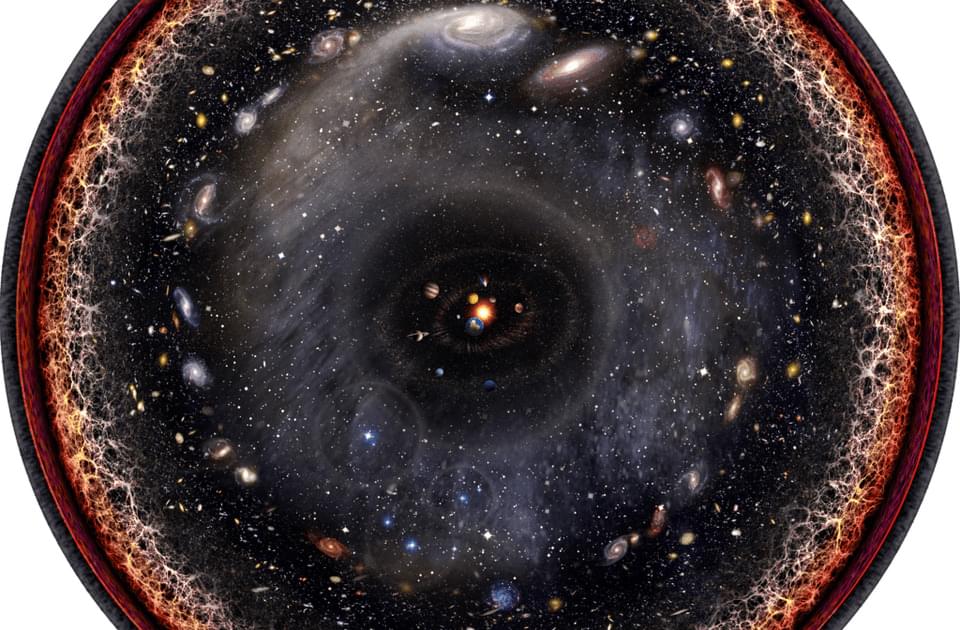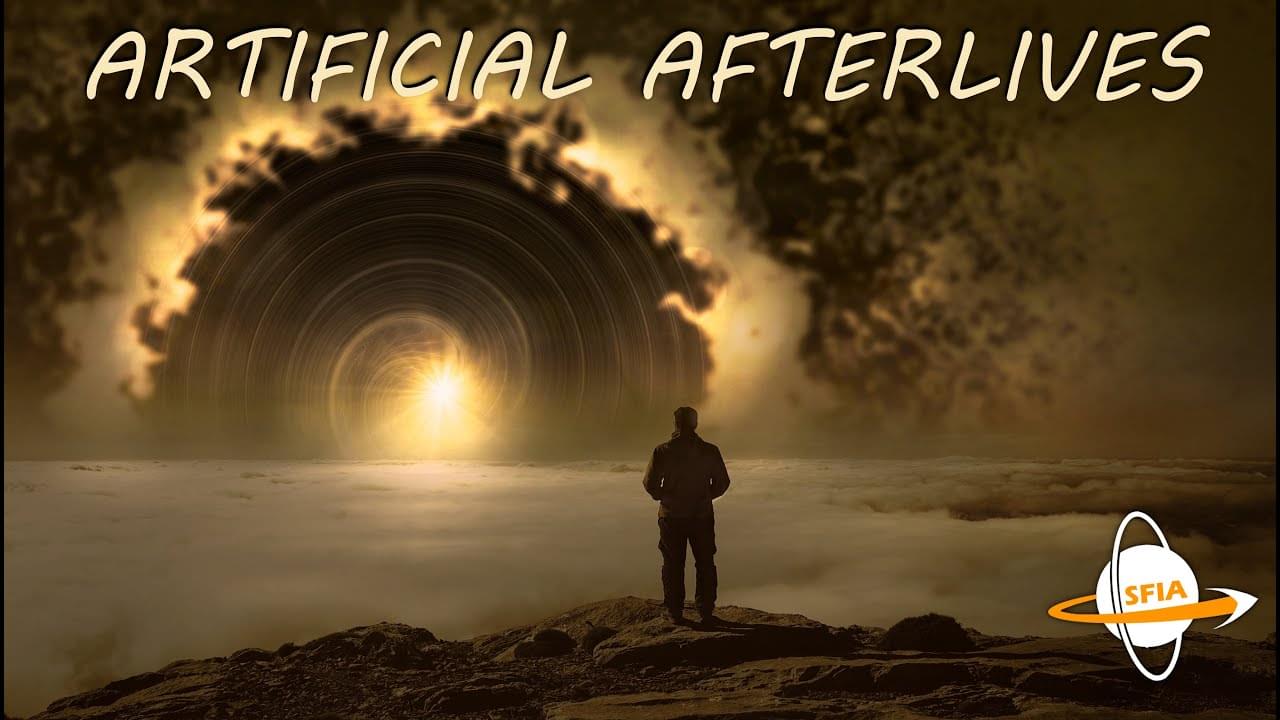When we look out at the Universe, even with Hubble, we’re only seeing the closest, biggest, brightest galaxies. Here’s where the rest are.

When we look out at the Universe, even with Hubble, we’re only seeing the closest, biggest, brightest galaxies. Here’s where the rest are.
Galactic winds enable the exchange of matter between galaxies and their surroundings. In this way, they limit the growth of galaxies, that is, their star formation rate. Although this had already been observed in the local universe, an international research team led by a CNRS scientist1 has just revealed — using MUSE, 2 an instrument integrated into the European Southern Observatory’s (ESO) Very Large Telescope — the existence of the phenomenon in galaxies which are more than 7 billion years old and actively forming stars, the category to which most galaxies belong.
The team’s findings, to be published in Nature on 6 December 2023, thus show this is a universal process.
Galactic winds are created by the explosion of massive stars.
NASA’s Cassini probe has uncovered compelling evidence hinting at the potential existence of life on Saturn’s icy moon Enceladus.
Interestingly, a detailed review of Cassini’s data has revealed that the subsurface ocean hidden beneath the moon’s frozen surface is a rich source of chemical energy.
This disclosure strengthens the case for exploring the possibility of life within the ocean of this frozen celestial body.
Continue reading “Saturn’s icy moon hosts vital life source, key molecule, reveals NASA” »
No one has yet managed to travel through time – at least to our knowledge – but the question of whether or not such a feat would be theoretically possible continues to fascinate scientists.
As movies such as The Terminator, Donnie Darko, Back to the Future and many others show, moving around in time creates a lot of problems for the fundamental rules of the Universe: if you go back in time and stop your parents from meeting, for instance, how can you possibly exist in order to go back in time in the first place?
It’s a monumental head-scratcher known as the ‘grandfather paradox’, but a few years ago physics student Germain Tobar, from the University of Queensland in Australia, worked out how to “square the numbers” to make time travel viable without the paradoxes.

The afterlife Jones made.
For as long as we have had history and likely before, people have contemplated a life after this one, but might we one day create artificial afterlives? And if so, will we create heavens or hells?\
Get Nebula using my link for 40% off an annual subscription: https://go.nebula.tv/isaacarthur\
Watch my exclusive video on Free Will \& Orch OR: https://nebula.tv/videos/isaacarthur–…\
\
Visit our Website: http://www.isaacarthur.net\
Join Nebula: https://go.nebula.tv/isaacarthur\
Support us on Patreon: / isaacarthur \
Support us on Subscribestar: https://www.subscribestar.com/isaac-a…\
Facebook Group: / 1,583,992,725,237,264 \
Reddit: / isaacarthur \
Twitter: / isaac_a_arthur on Twitter and RT our future content.\
SFIA Discord Server: / discord \
\
Listen or Download the audio of this episode from Soundcloud: Episode’s Audio-only version: / artificial-afterlives \
Episode’s Narration-only version: / space-habitats-narration-only \
\
Credits:\
Artificial Afterlives \
Science \& Futurism with Isaac Arthur\
Episode 399, June 15, 2023\
Written, Produced \& Narrated by Isaac Arthur\
\
Editors:\
Dillon Olander\
\
Graphics by: \
Jeremy Jozwik\
Ken York\
\
Music Courtesy of\
Markus Junnikkala, \
Hours prior to the secretive spacecraft’s launch, SpaceX stood down from the 7th planned liftoff of the U.S. Space Force’s own X-37B reusable space plane, and even removed the Falcon Heavy rocket containing it from the Kennedy Space Center launch pad. The mission, known as USSF-52, was scrubbed on Wednesday (Dec. 13) to “perform additional system checkouts.” Exact reasons for this delay remain unknown, and a new date has yet to be set for launch.
Related: China’s mysterious space plane returns to Earth after 9-month orbital mission
Much like the X-37B, little is known about China’s reusable space plane, subbed Shenlong, or “Divine Dragon.” From what bits of information are available to the public, though, the spacecraft appears to be used for testing new payloads and orbital operations. It launches vertically atop a rocket, conducts its mission and then lands horizontally on a runway similar to NASA’s space shuttle.
Simulations of binary neutron star mergers suggest that future detectors will distinguish between different models of hot nuclear matter.
Researchers used supercomputer simulations to explore how neutron star mergers affect gravitational waves, finding a key relationship with the remnant’s temperature. This study aids future advancements in detecting and understanding hot nuclear matter.
Exploring neutron star mergers and gravitational waves.
A recent analysis of a peculiar pair of galaxies located billions of light-years away suggests the possibility of a cosmic string —a hypothetical feature in the fabric of the Universe. Initially considered distinct, the two galaxies may be duplicated images caused by gravitational lensing, a phenomenon where space-time bends around foreground mass, acting like a lens.
Led by researchers of the Indian Institute of Astrophysics, the study identifies a cosmic string candidate, CSc-1, in the cosmic microwave background, the lingering radiation from the Universe’s birth. Cosmic strings, theoretical one-dimensional wrinkles formed at the dawn of time, are believed to be highly dense and massive, potentially extending across the entire Universe.
Observationally proving cosmic strings is challenging because their effects can resemble other phenomena. However, minute differences in their impact distinguish them. The researchers focused on a galaxy pair, SDSSJ110429, within CSc-1 as a potential cosmic string signature. Gravitational lensing typically involves a foreground mass causing observable distortions, but SDSSJ110429 lacks evident foreground mass or distorted light.
NASA’s James Webb Space Telescope has discovered a small free-floating ‘failed star’ within a nearby, young star cluster, setting a new record.
Enceladus’ ice plumes may hold the building blocks of life. Researchers have shown unambiguous laboratory evidence that amino acids transported in the ice plumes of Saturn’s moon, Eceladus, can survive impact speeds of up to 4.2 km/s, supporting their detection during sampling by spacecraft.
As astrophysics technology and research continue to advance, one question persists: is there life elsewhere in the universe? The Milky Way galaxy alone has hundreds of billions of celestial bodies, but scientists often look for three crucial elements in their ongoing search: water, energy and organic material. Evidence indicates that Saturn’s icy moon Enceladus is an ‘ocean world’ that contains all three, making it a prime target in the search for life.
During its 20-year mission, NASA’s Cassini spacecraft discovered that ice plumes spew from Enceladus’ surface at approximately 800 miles per hour (400 m/s). These plumes provide an excellent opportunity to collect samples and study the composition of Enceladus’ oceans and potential habitability.
